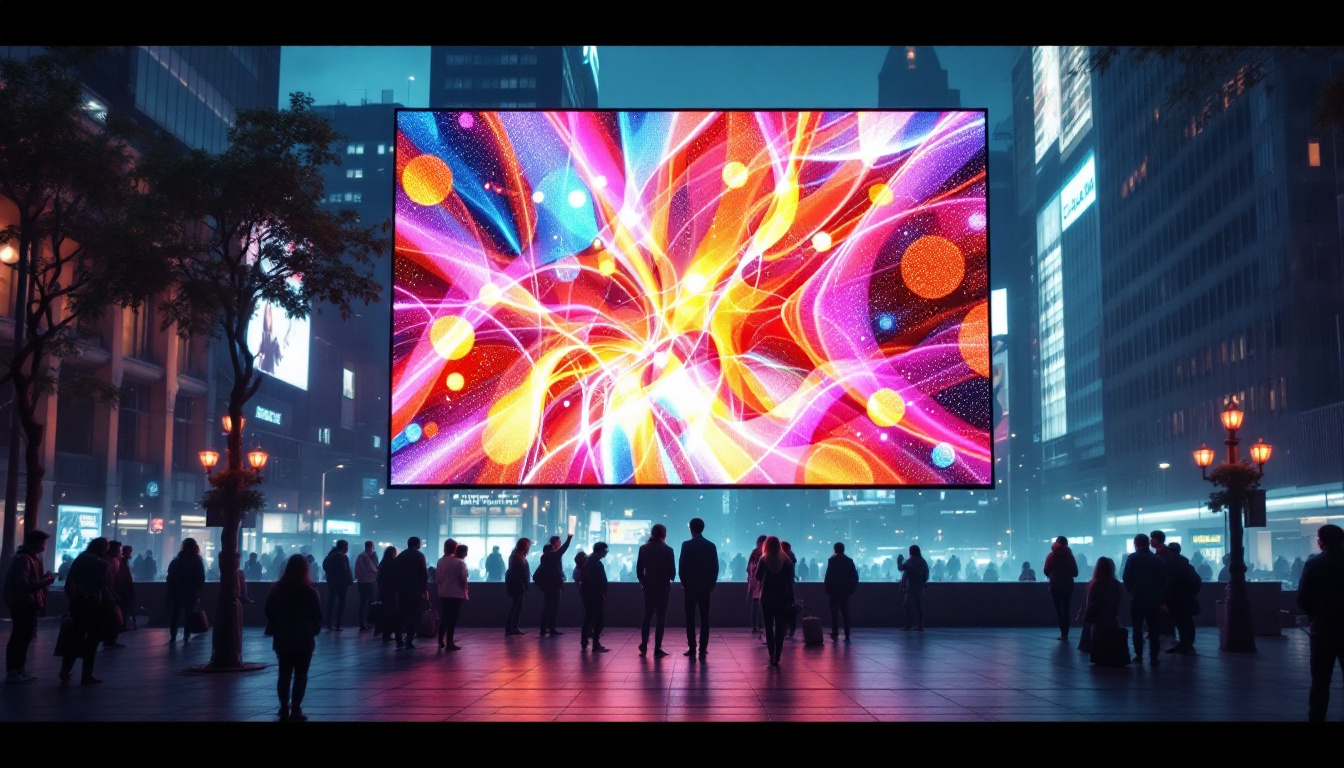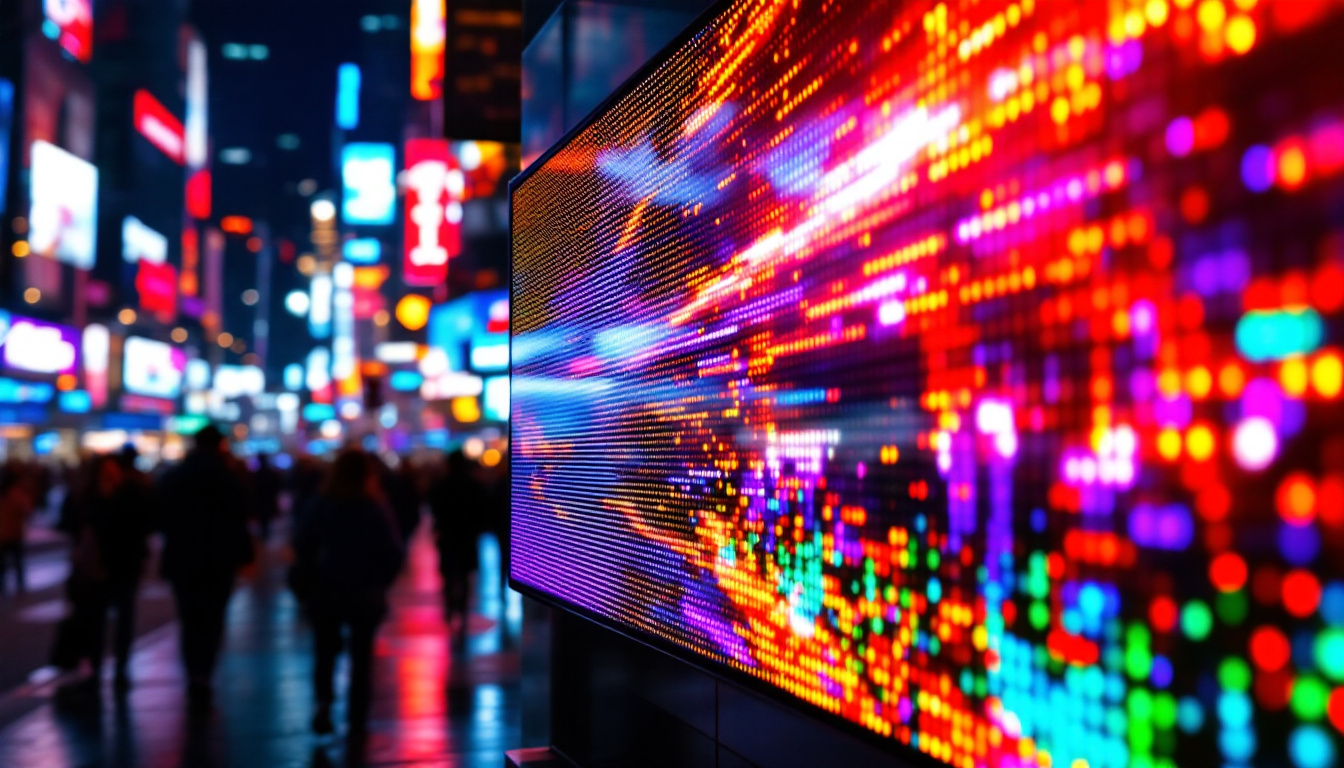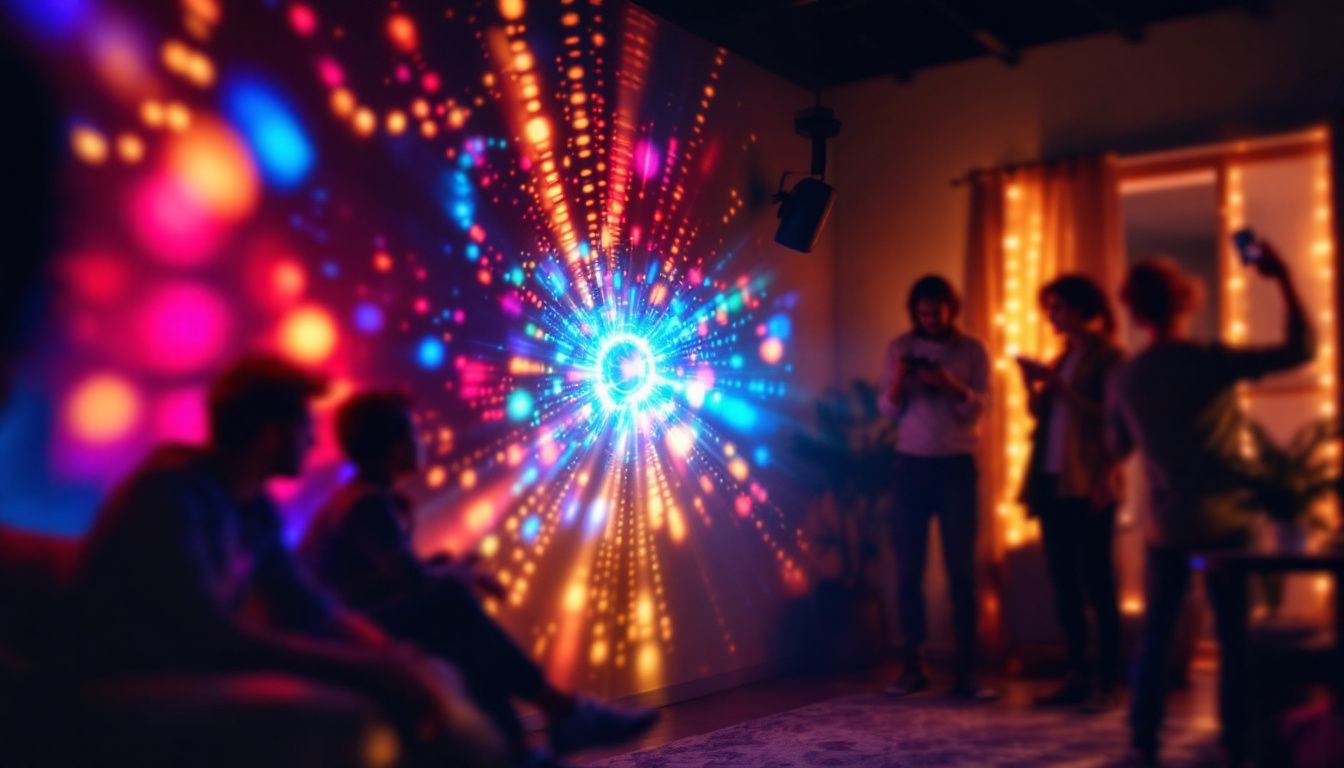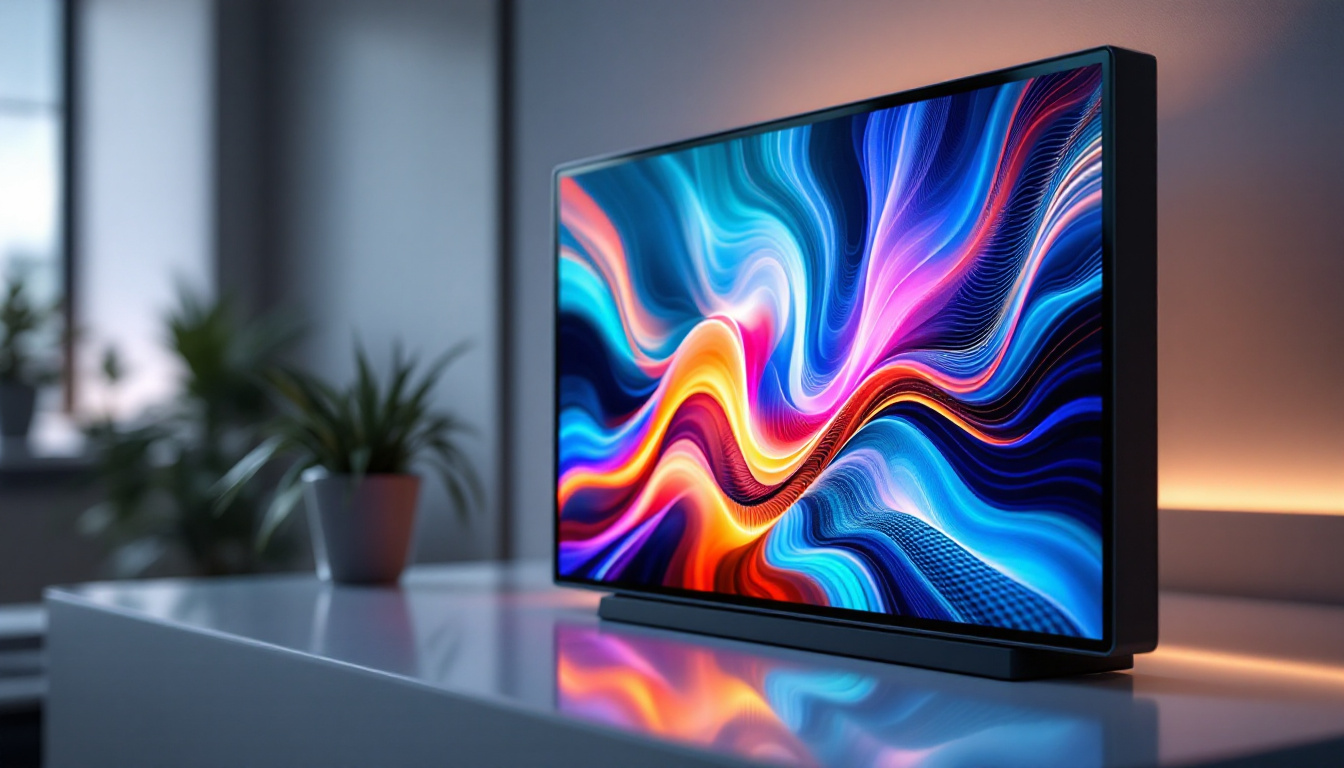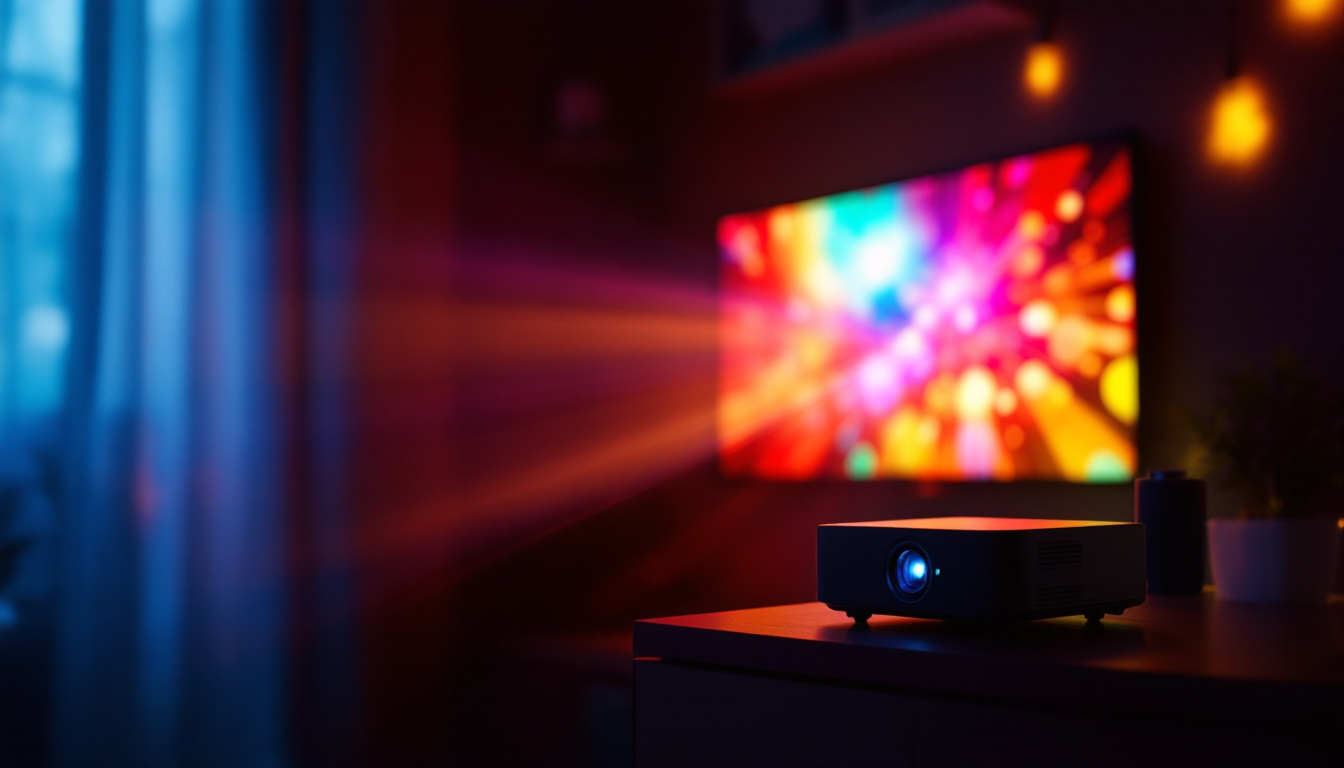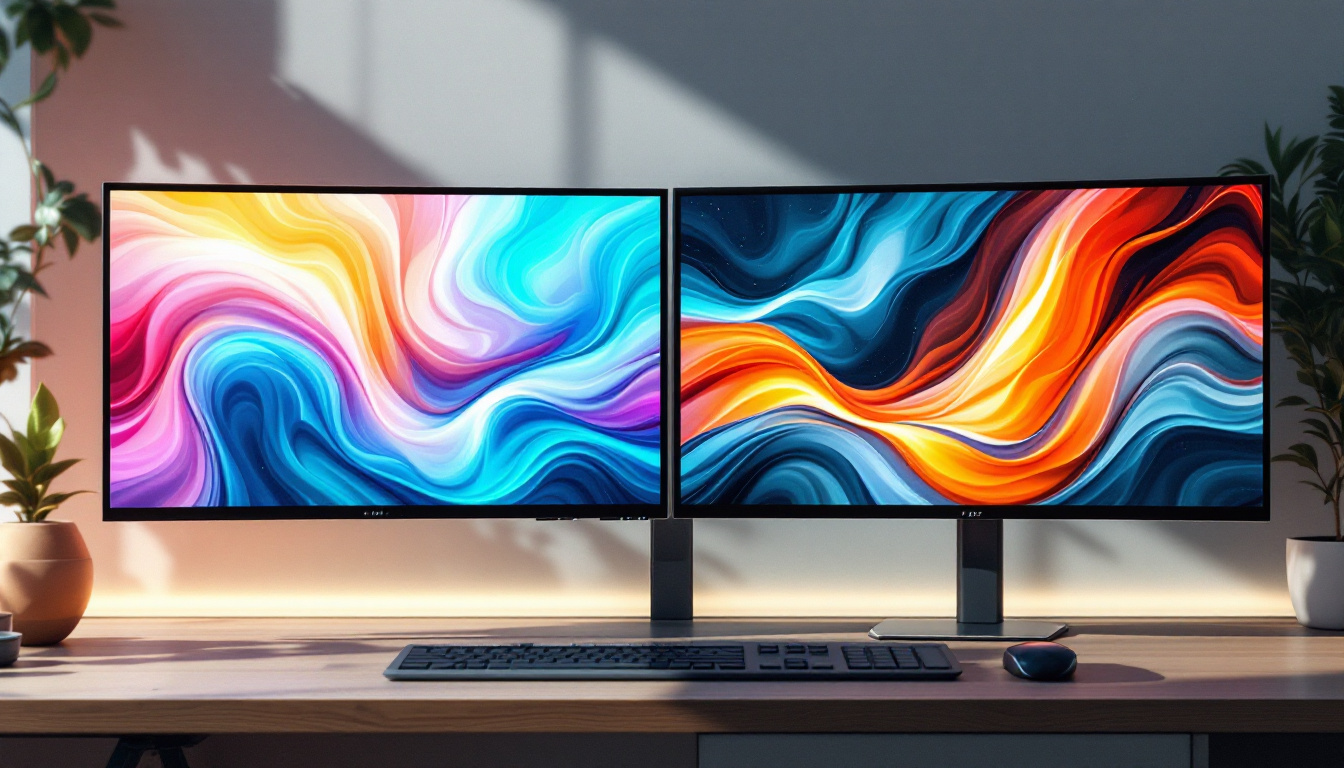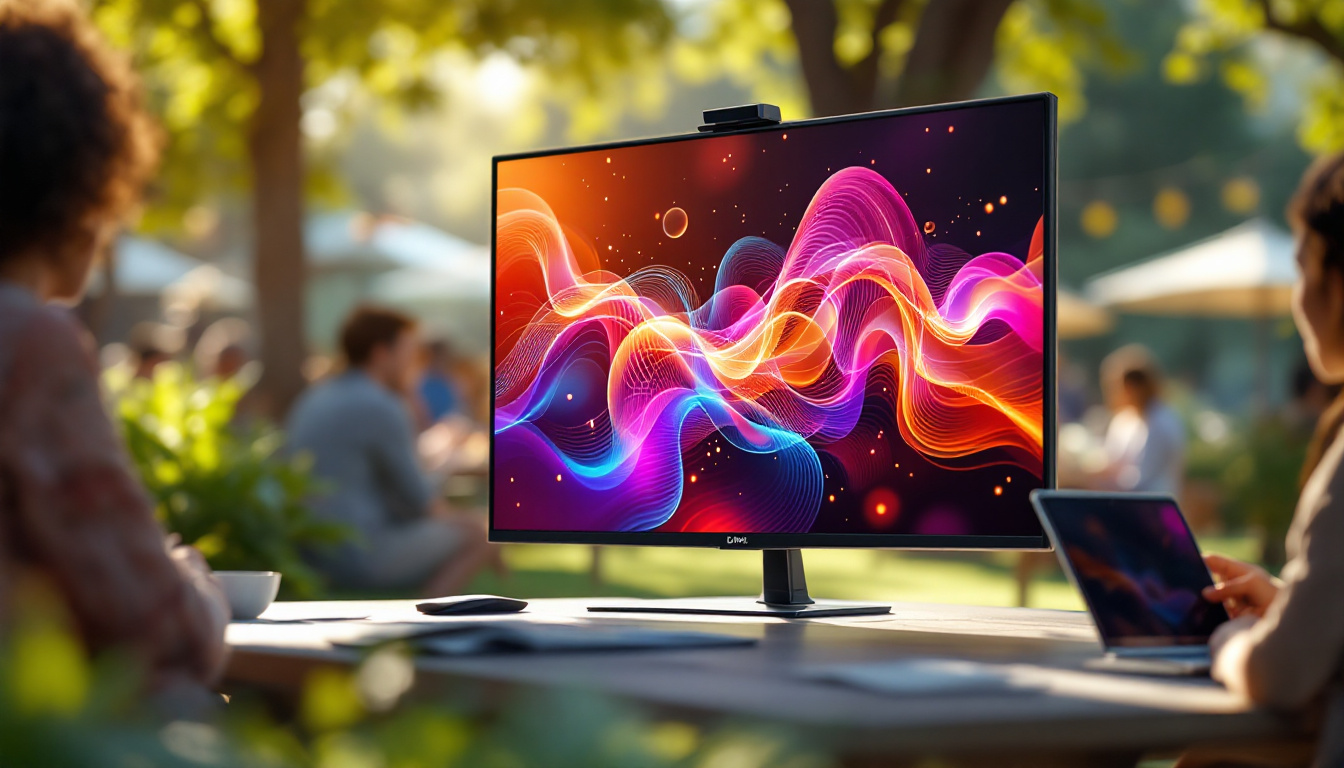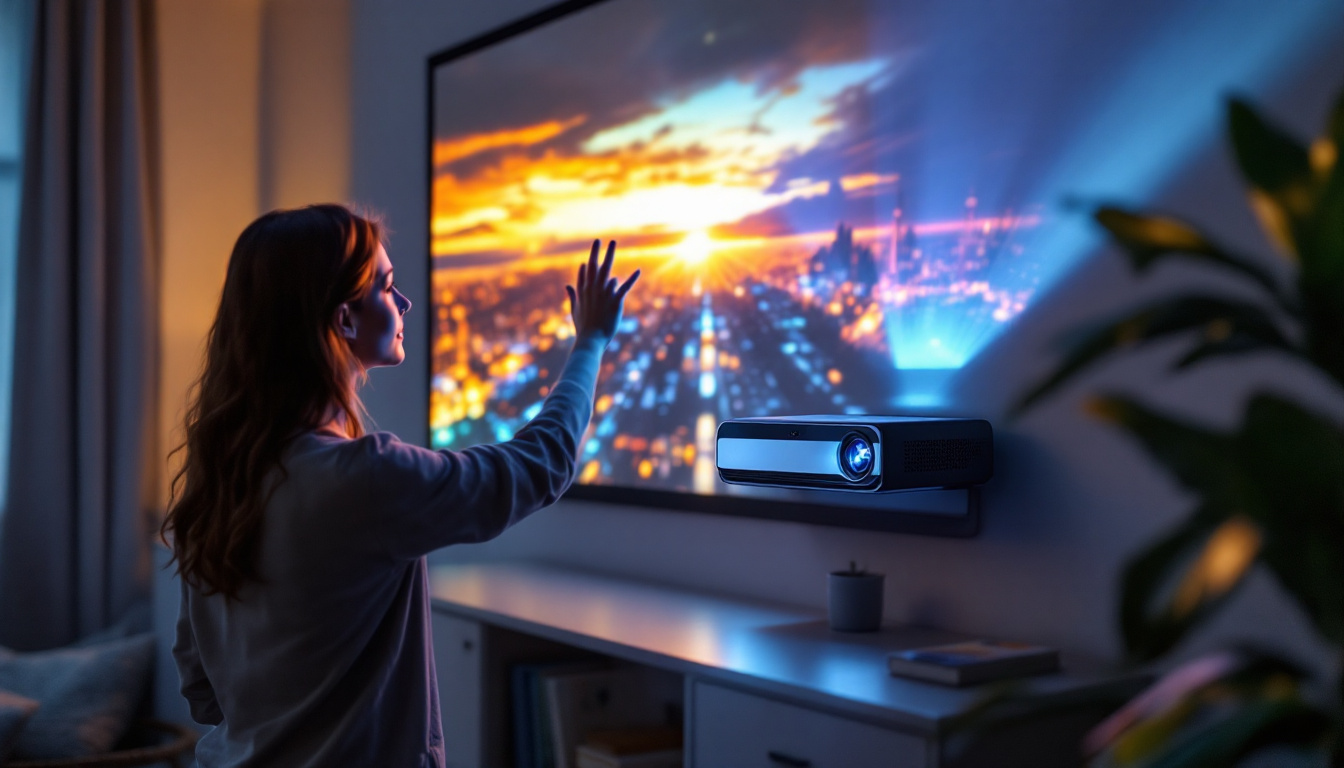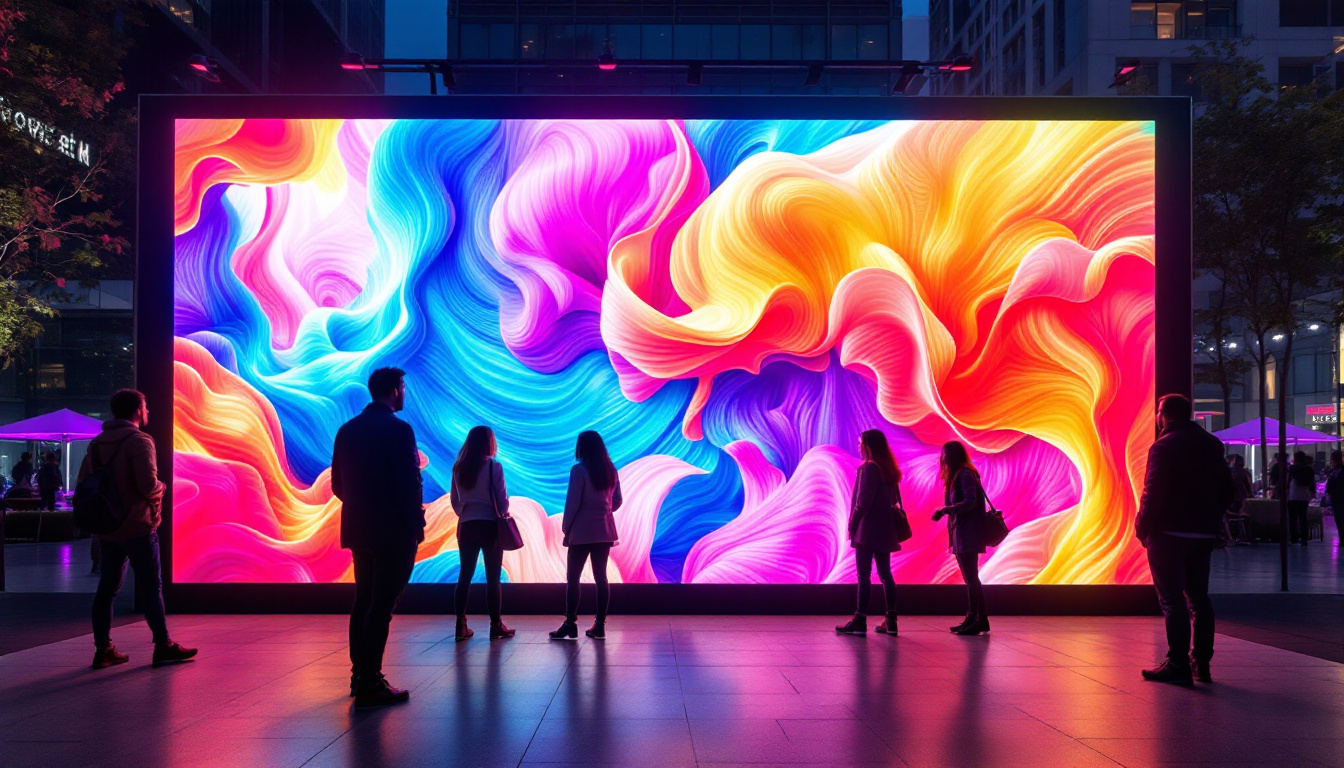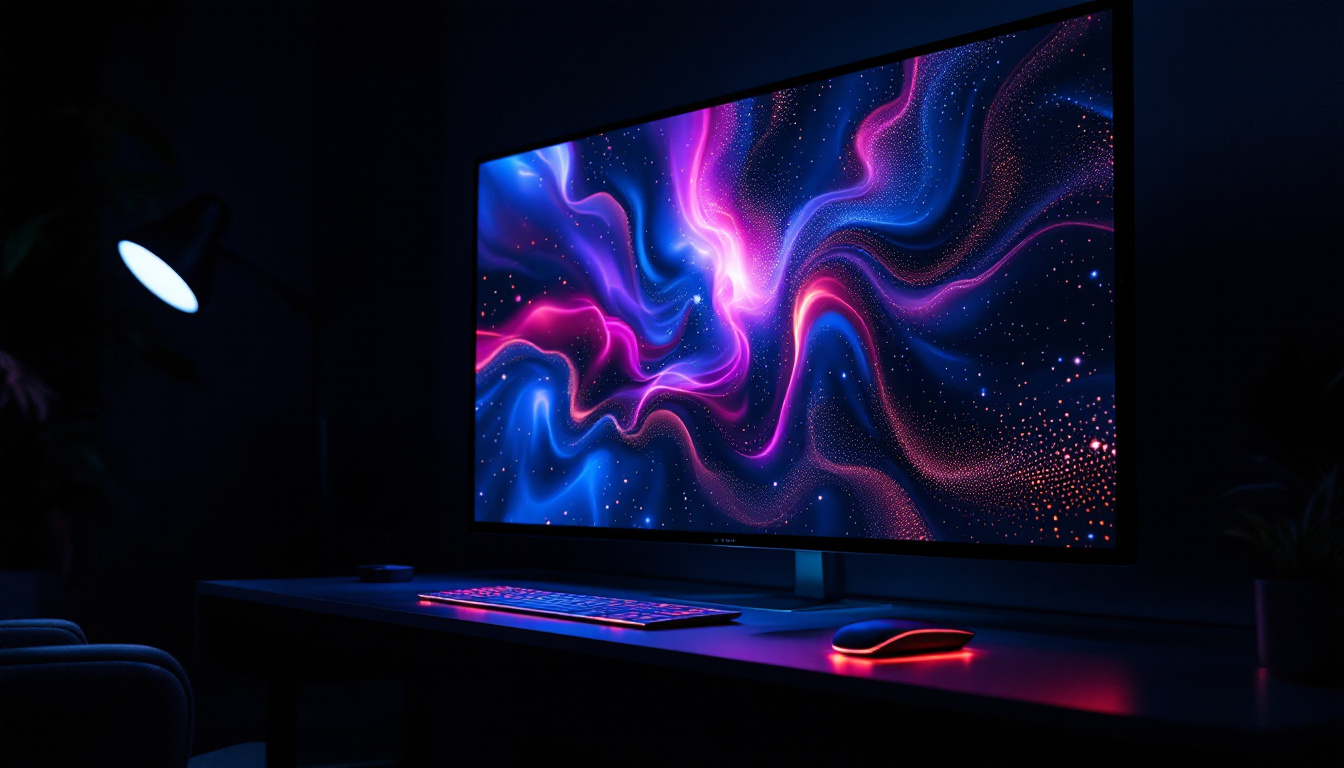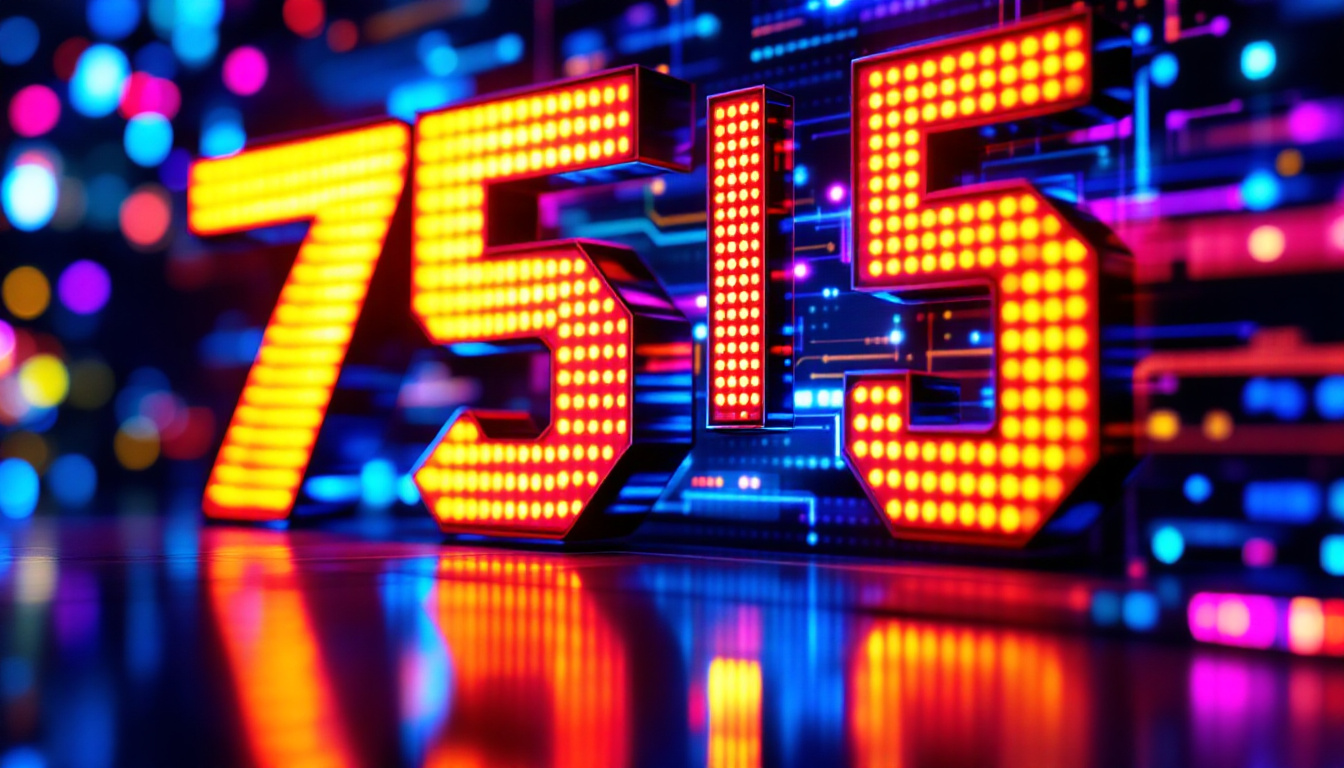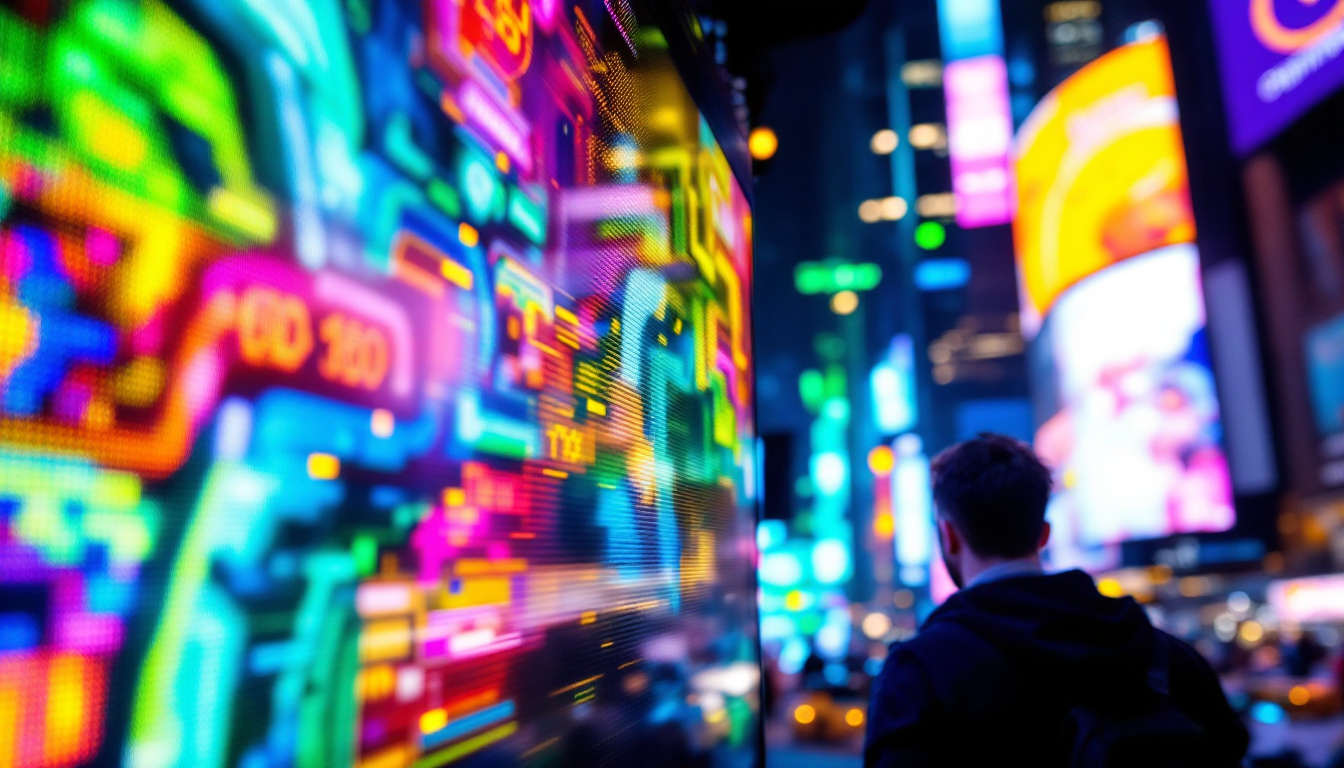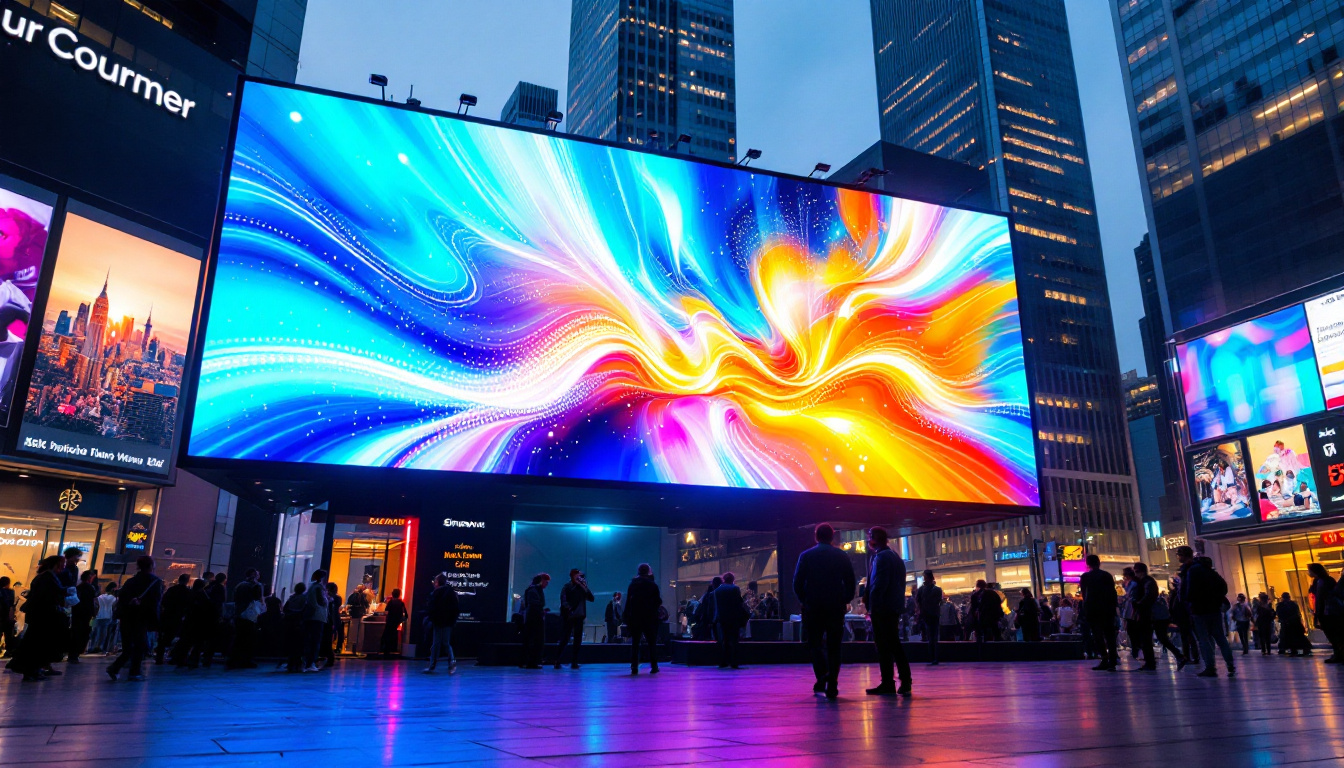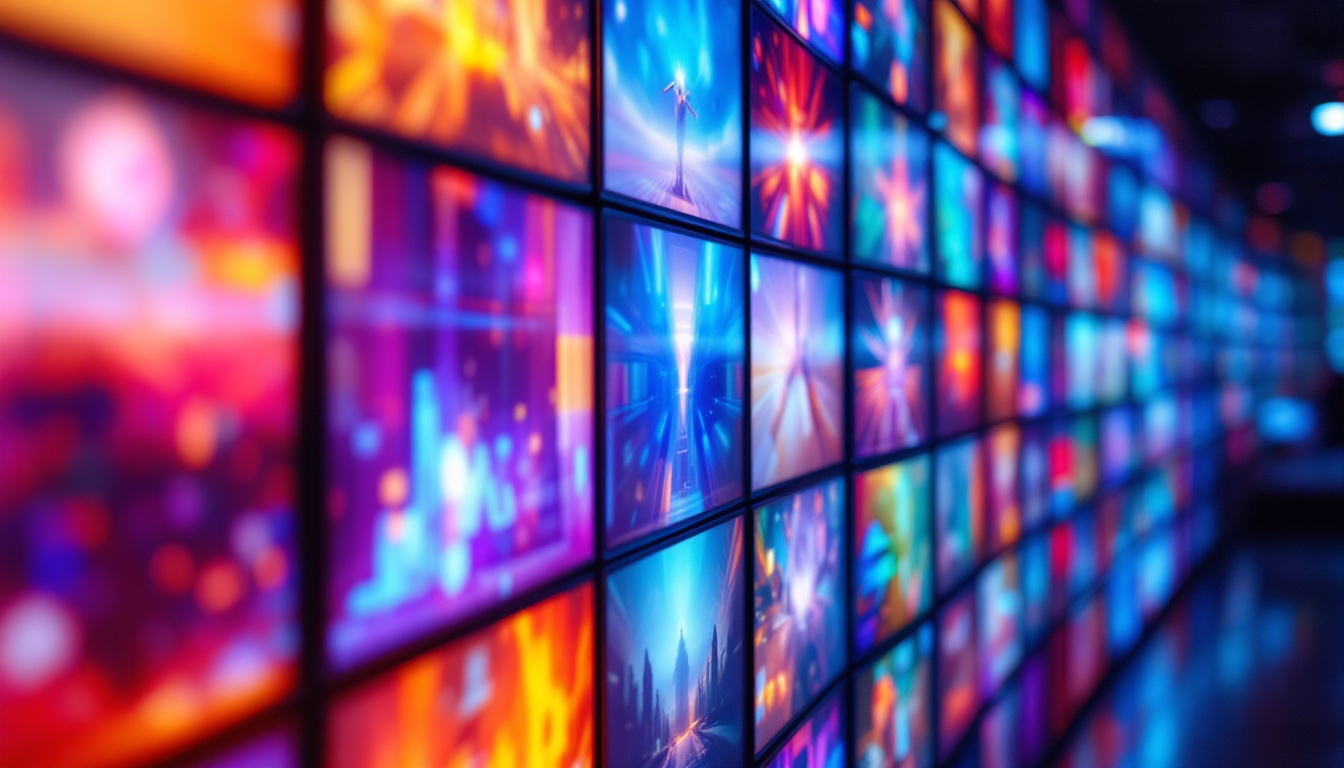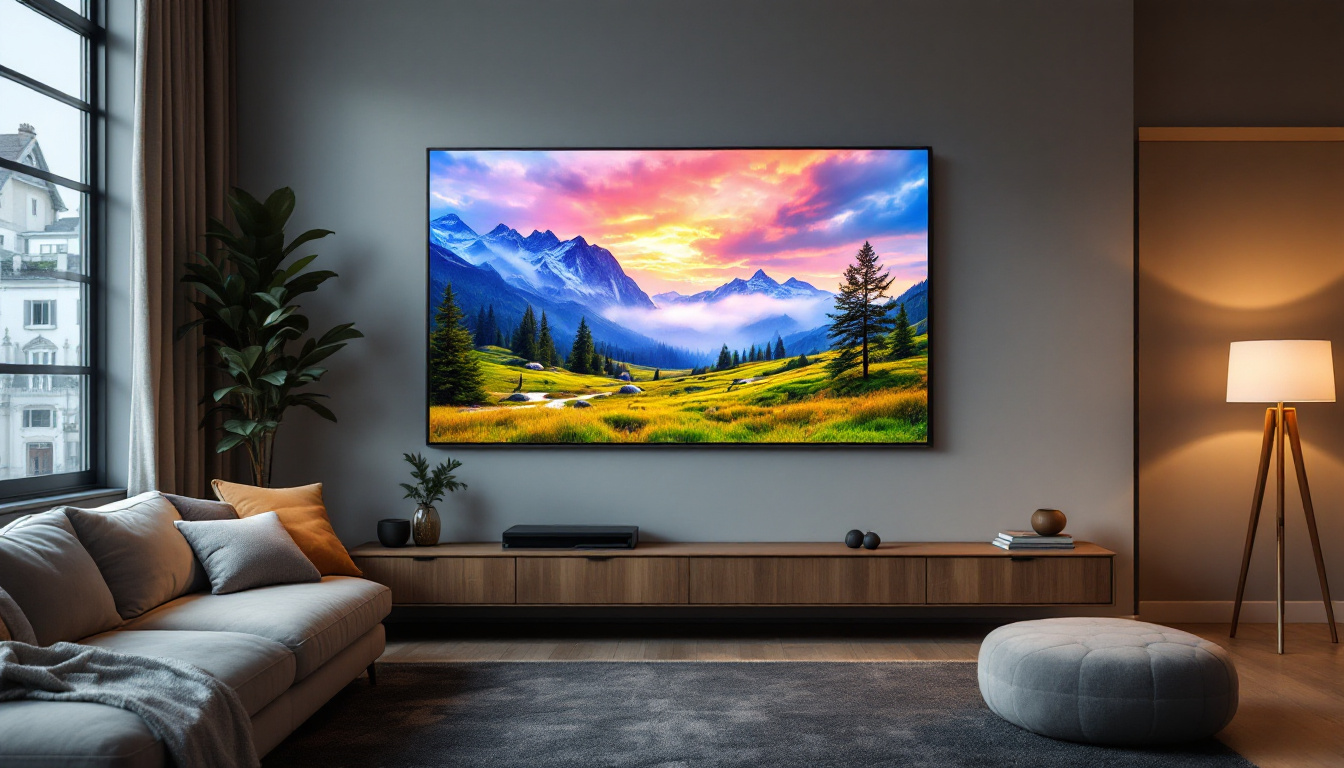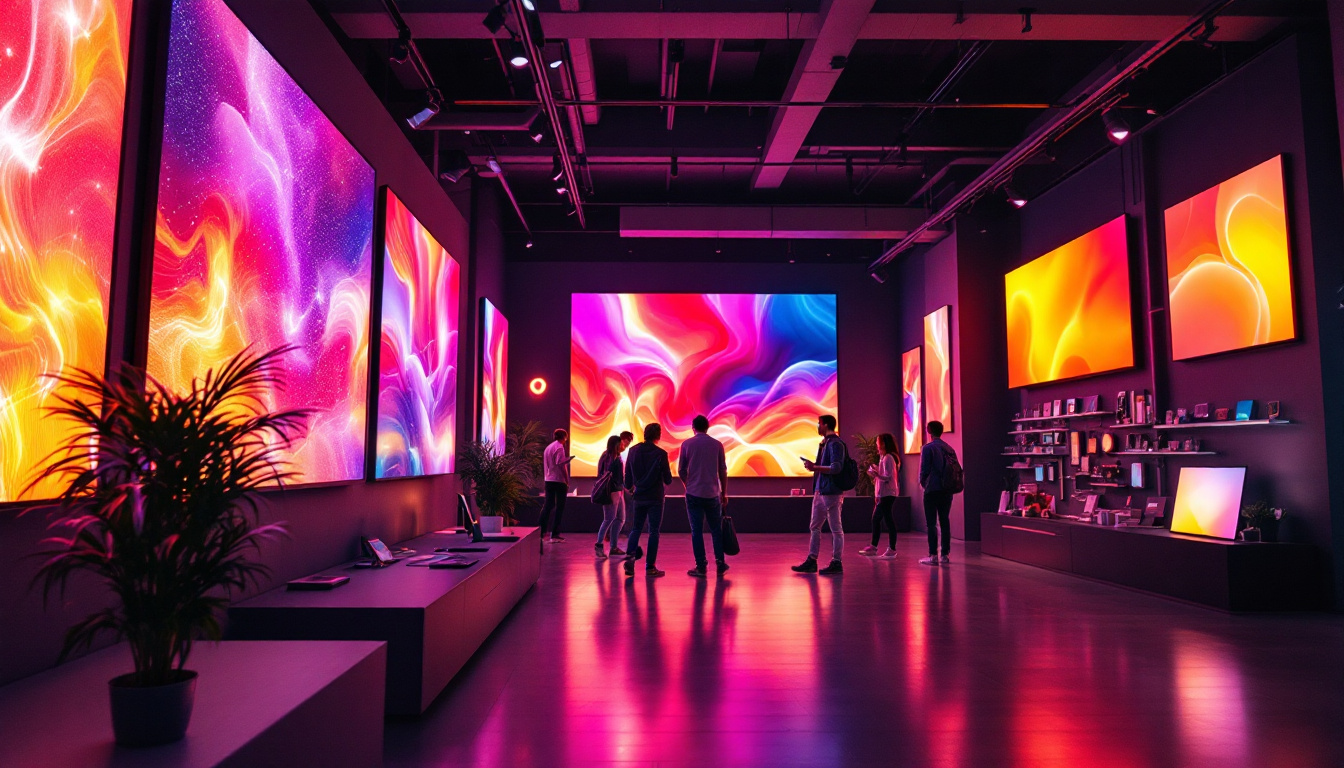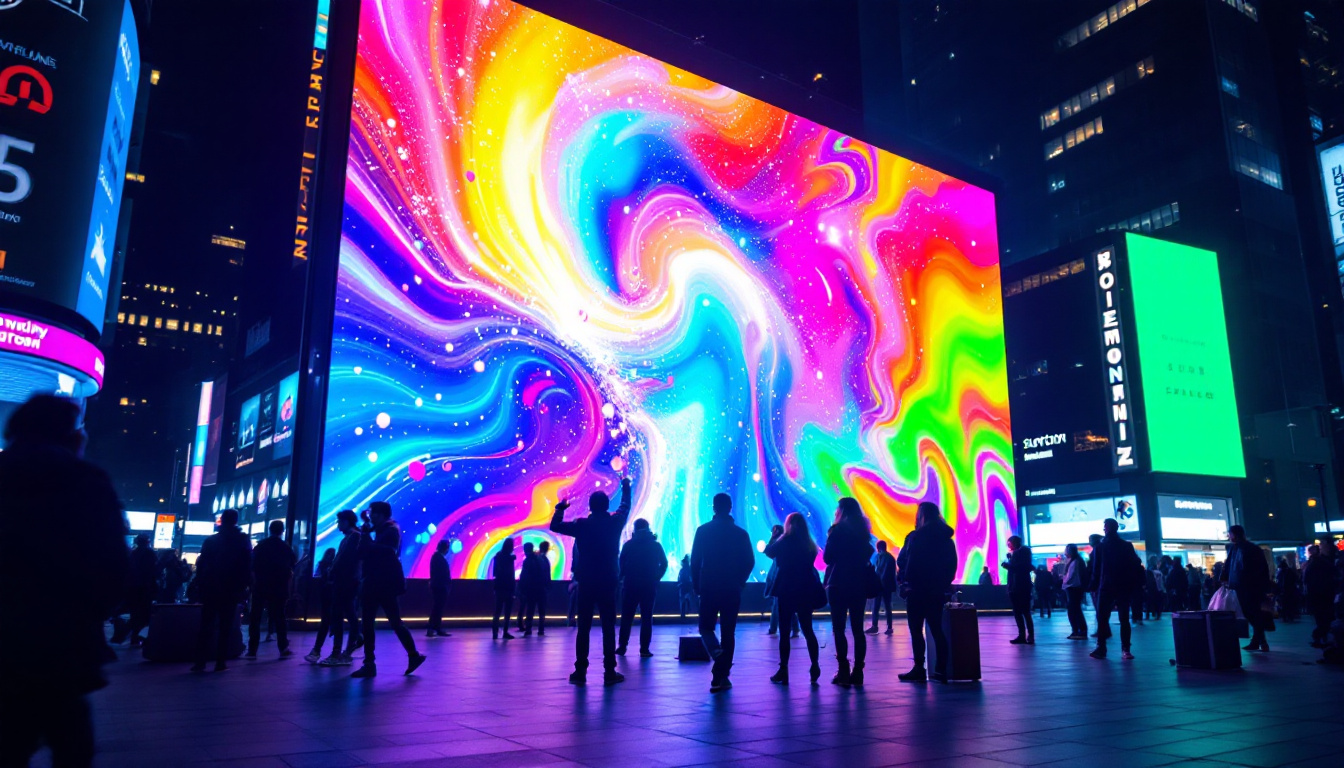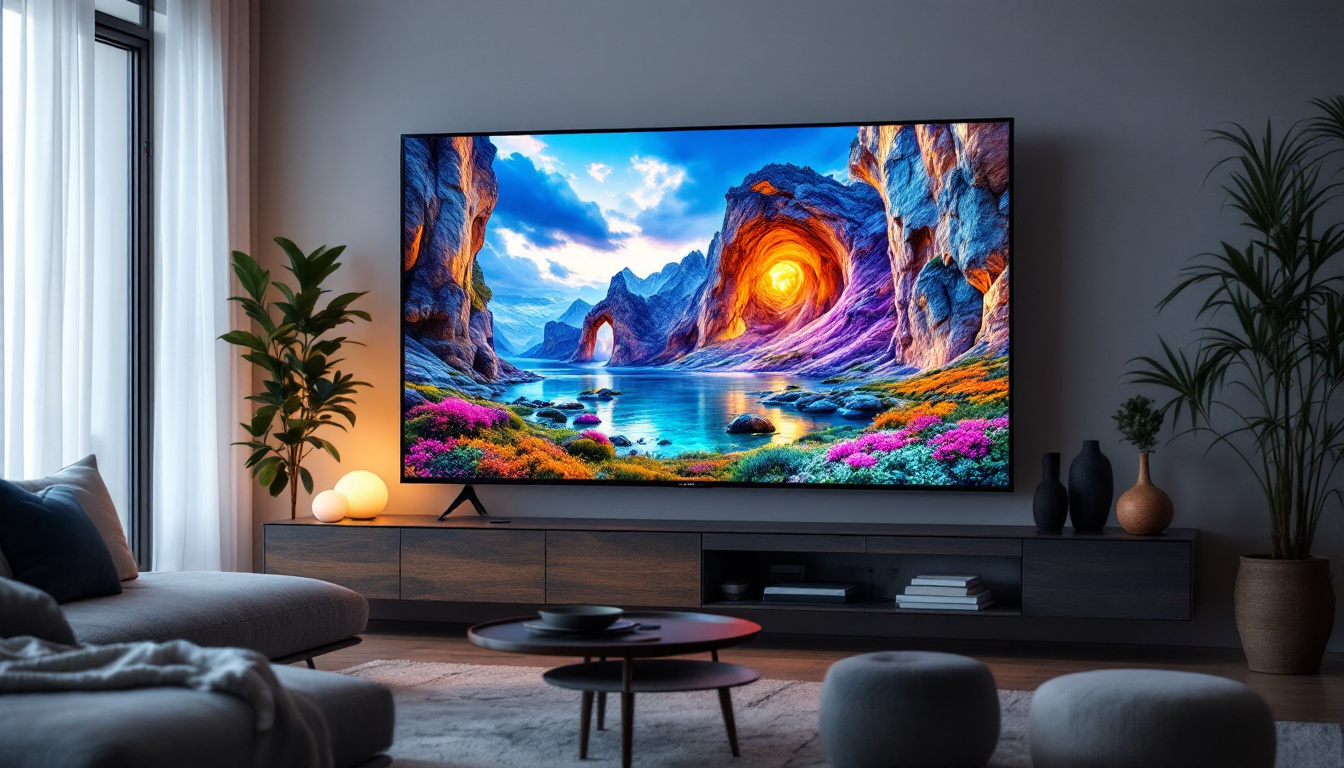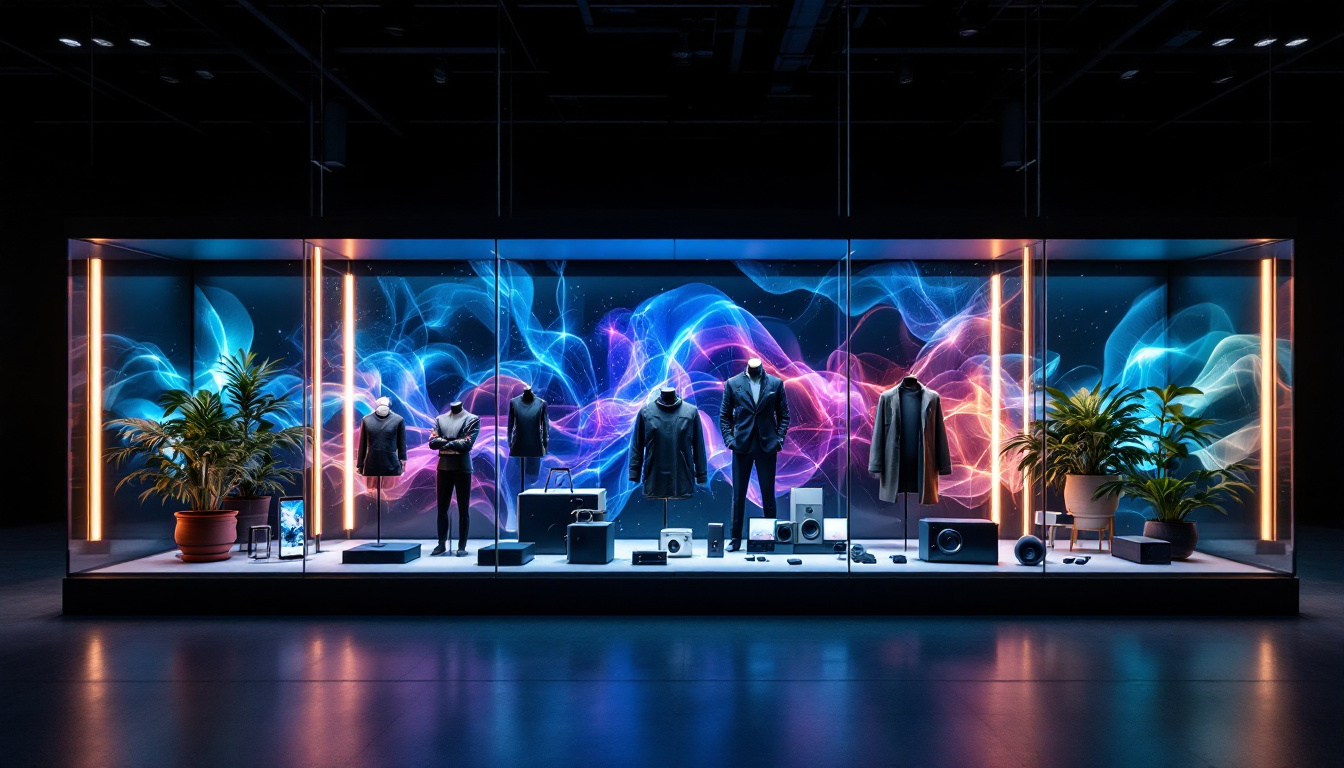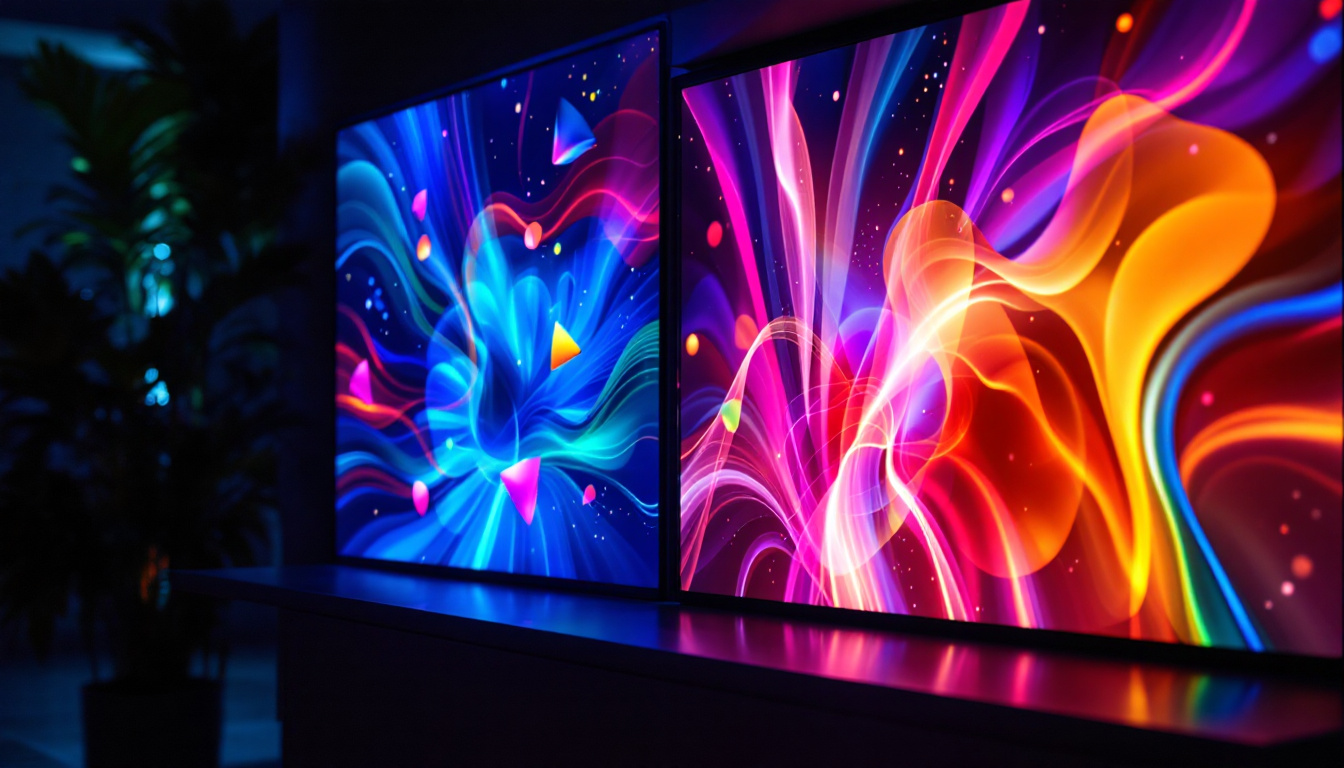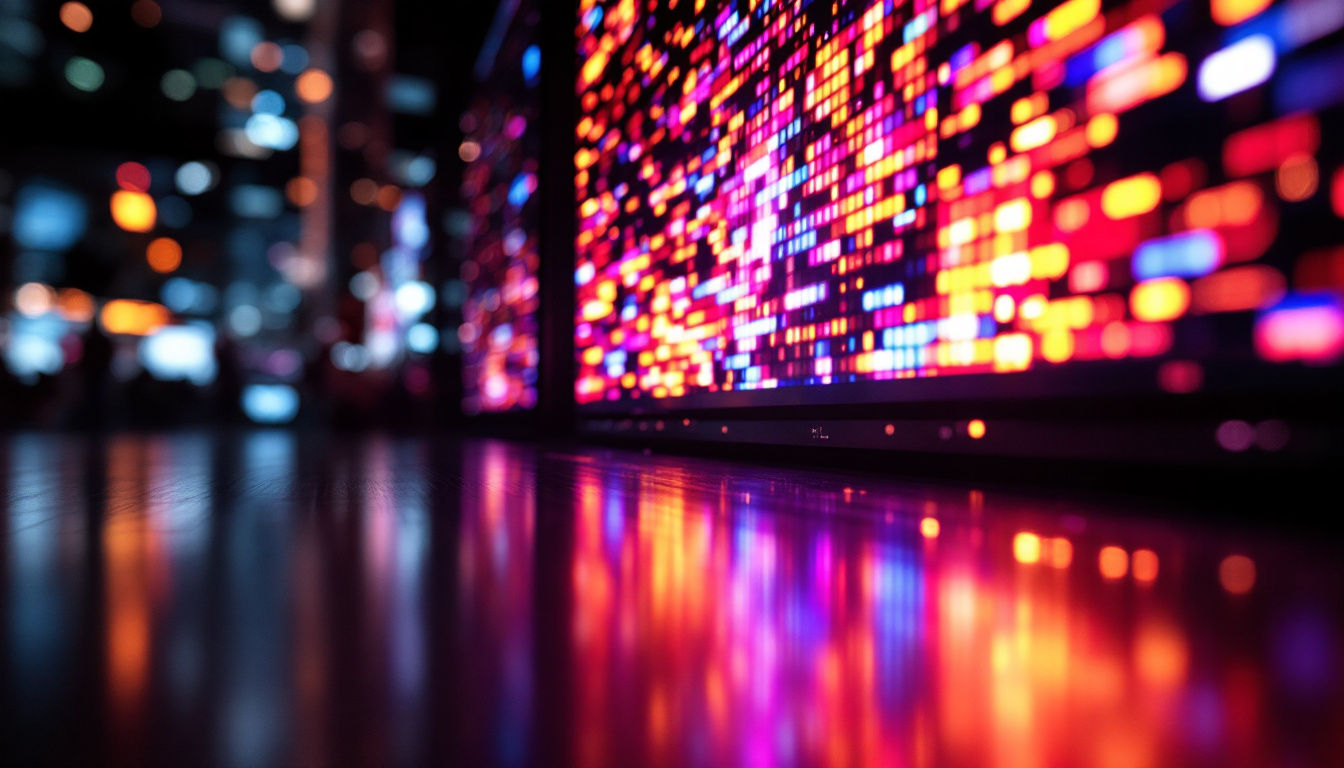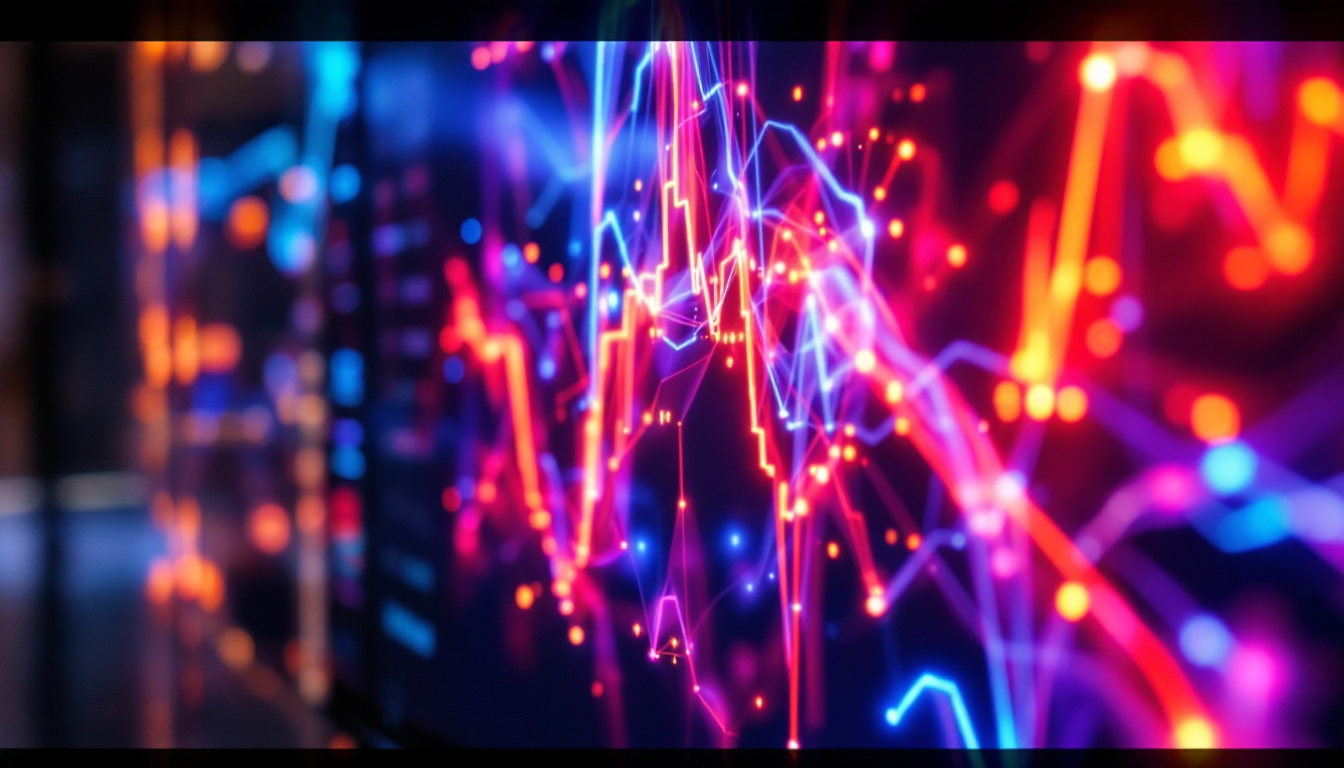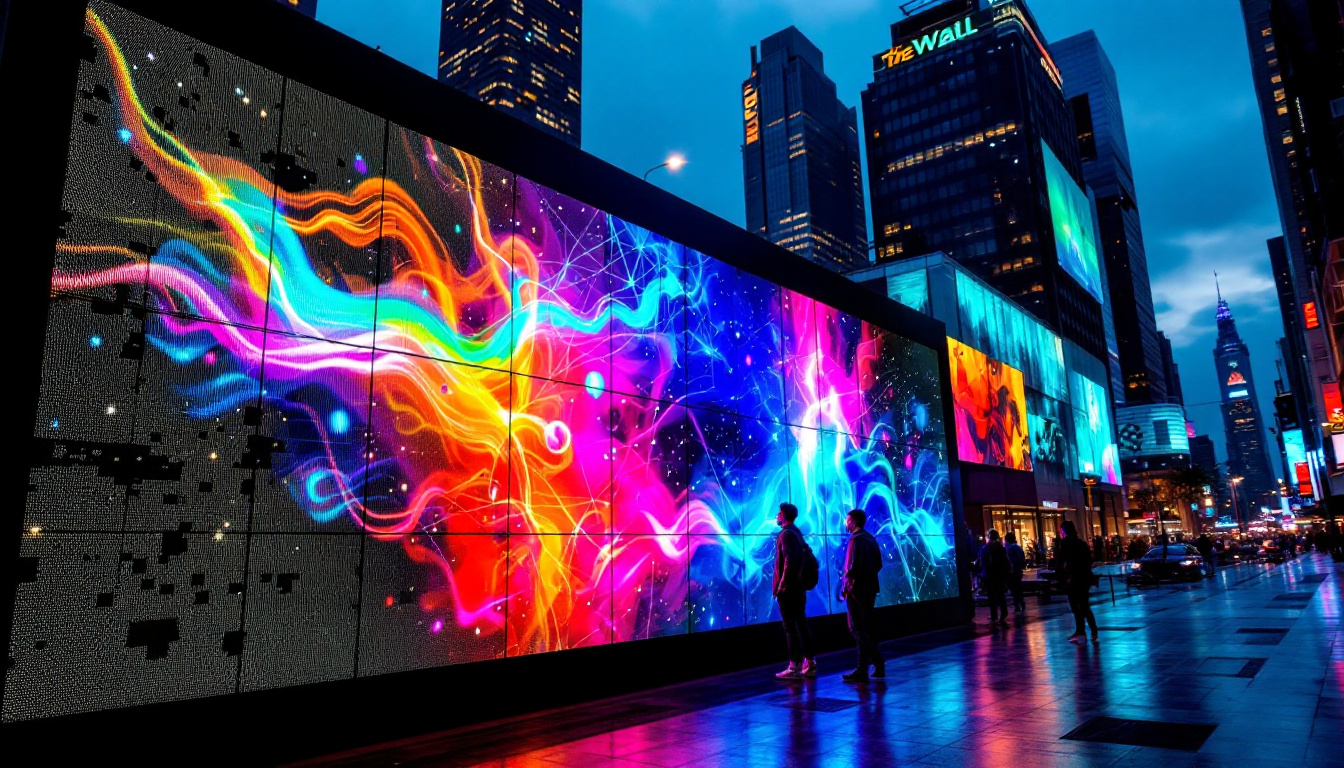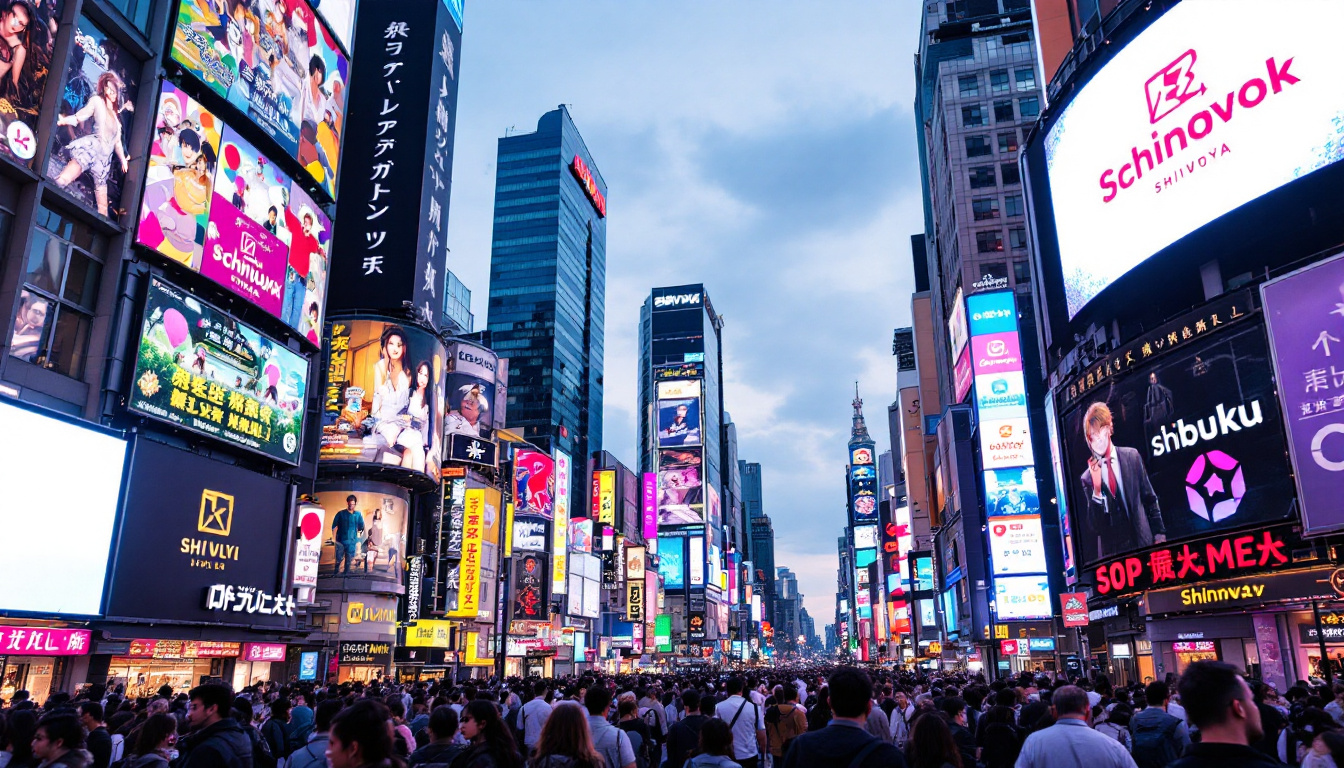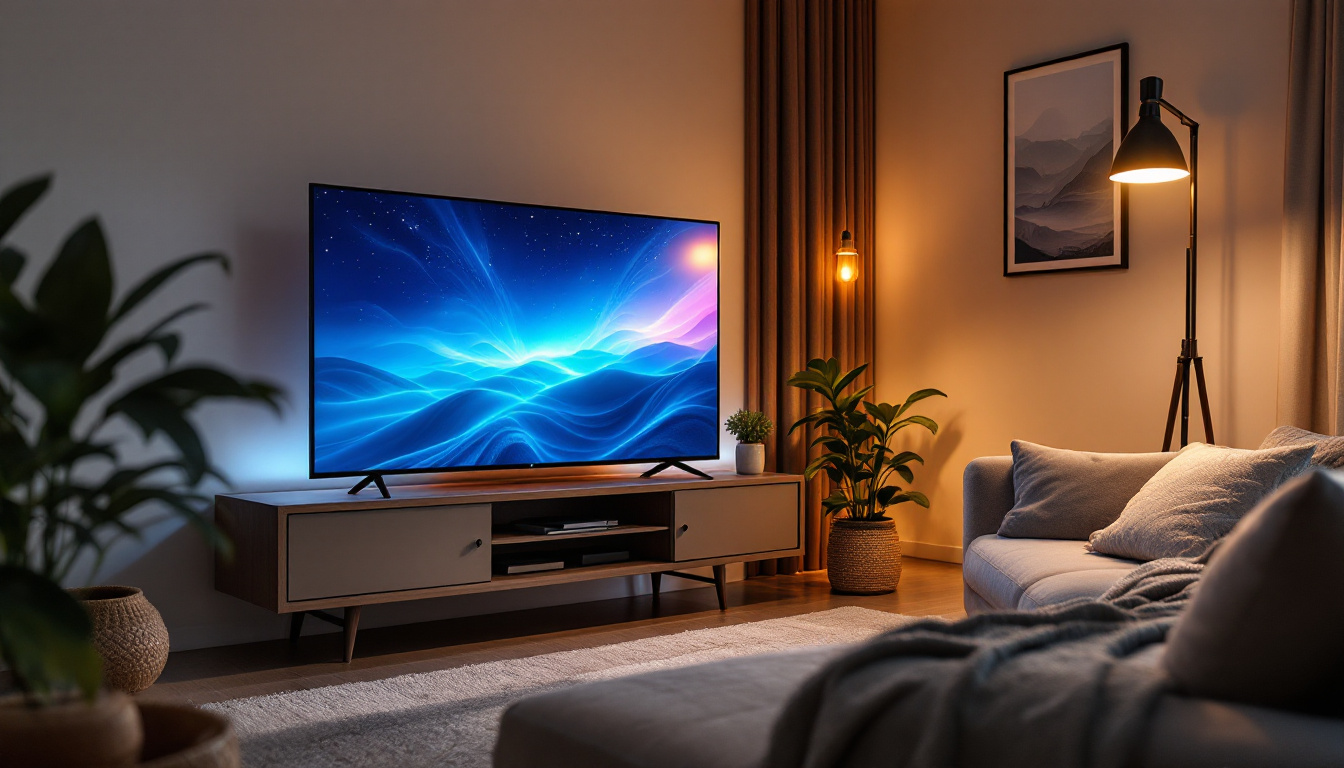In recent years, LED displays have become ubiquitous in various sectors, ranging from advertising to entertainment and even in everyday consumer electronics. The versatility and efficiency of LED technology have made it a popular choice for a wide array of applications. This article aims to delve into the intricacies of LED displays, exploring their functionality, types, advantages, and future trends.
Understanding LED Technology
LED, or Light Emitting Diode, is a semiconductor device that emits light when an electric current passes through it. Unlike traditional incandescent bulbs, which produce light through heat, LEDs are far more efficient and have a longer lifespan. This efficiency is one of the reasons why LED displays have gained traction in various industries. The energy savings associated with LED technology can lead to significant reductions in electricity costs, making them an attractive option for both consumers and businesses alike. Additionally, the low heat output of LEDs means that they can be used in a wider range of applications without the risk of overheating, further enhancing their versatility.
The Science Behind LEDs
The fundamental principle of an LED lies in electroluminescence, where a material emits light in response to an electric current. This process occurs in a semiconductor material, typically composed of gallium, arsenic, or phosphorous. When electrons recombine with holes in the semiconductor, energy is released in the form of photons, which is visible light. The efficiency of this process is remarkable, as it allows LEDs to convert a higher percentage of electrical energy into light compared to traditional lighting technologies. This efficiency not only contributes to lower energy consumption but also reduces the carbon footprint associated with lighting.
Different materials can produce different colors of light. For instance, using indium gallium nitride can yield blue light, while gallium phosphide can produce green light. By combining these colors, manufacturers can create full-color displays. Furthermore, advancements in LED technology have led to the development of white LEDs, which are achieved by coating blue LEDs with phosphor materials that convert some of the blue light into yellow, resulting in a balanced white light. This innovation has opened up new possibilities for LED applications in residential and commercial lighting.
Types of LED Displays
LED displays come in various forms, each designed for specific applications. The most common types include:
- Direct View LED Displays: These displays consist of individual LED modules that are arranged in a grid. They are often used for large outdoor billboards and digital signage. Their brightness and visibility in direct sunlight make them ideal for advertising and public information displays.
- LED Backlit Displays: These displays use LEDs to illuminate an LCD screen from behind. They are commonly found in televisions and computer monitors. The use of LED backlighting allows for thinner screens with improved color accuracy and energy efficiency compared to traditional fluorescent backlighting.
- Organic LED (OLED) Displays: OLED technology utilizes organic compounds to emit light, allowing for thinner displays with better contrast ratios. These are often used in smartphones and high-end televisions. The flexibility of OLED technology also enables curved and foldable screens, paving the way for innovative designs in consumer electronics.
Advantages of LED Displays
LED displays offer numerous benefits that make them a preferred choice for many applications. Their advantages include energy efficiency, longevity, and superior image quality.
Energy Efficiency
One of the standout features of LED displays is their energy efficiency. Compared to traditional display technologies, LEDs consume significantly less power. This not only reduces operational costs but also minimizes the environmental impact, making them a more sustainable choice.
For example, an LED display can consume up to 75% less energy than an incandescent bulb. This efficiency is particularly beneficial for large-scale installations, such as outdoor billboards, where energy costs can quickly add up.
Longevity and Durability
LED displays are known for their impressive lifespan. While traditional displays may last a few thousand hours, LED technology can extend that lifespan to over 50,000 hours or more. This longevity translates to lower maintenance costs and less frequent replacements, making them a cost-effective solution in the long run.
Moreover, LEDs are more durable than other display technologies. They are less susceptible to damage from shocks and vibrations, making them suitable for outdoor environments where they may be exposed to harsh weather conditions.
Superior Image Quality
When it comes to image quality, LED displays excel in providing vibrant colors and high contrast ratios. The ability to produce deep blacks and bright whites enhances the overall viewing experience, making them ideal for applications that require high visual fidelity, such as digital signage and entertainment.
Additionally, LED displays can achieve higher refresh rates, reducing motion blur and providing smoother visuals. This characteristic is particularly important in applications like sports broadcasting and gaming, where fast-moving images are common.
Applications of LED Displays
The versatility of LED displays allows them to be utilized in a wide range of applications. From advertising to entertainment, their adaptability makes them an essential component in various industries.
Advertising and Digital Signage
One of the most prominent applications of LED displays is in advertising and digital signage. Businesses use LED screens to capture the attention of potential customers with dynamic content that can be easily updated. This flexibility allows for targeted advertising, enabling companies to tailor their messages based on time, location, or audience demographics.
Outdoor LED billboards have become a common sight in urban areas, offering high visibility and the ability to display vibrant, eye-catching graphics. These displays can also be programmed to change content in real-time, providing advertisers with the opportunity to engage with their audience more effectively.
Entertainment and Events
In the entertainment industry, LED displays play a crucial role in enhancing the viewer experience. Concerts, festivals, and sporting events often feature large LED screens that display live feeds, graphics, and animations, creating an immersive environment for attendees.
Moreover, LED technology is widely used in theaters and cinemas, where it can enhance the visual quality of films. The ability to produce rich colors and deep contrasts makes LED displays a popular choice for high-end movie theaters.
Consumer Electronics
LED technology has also made significant inroads into consumer electronics. From televisions to smartphones, LED displays are now standard features in many devices. The shift towards LED backlighting in LCD screens has improved energy efficiency and image quality, making these devices more appealing to consumers.
Furthermore, the rise of OLED technology has revolutionized the market, offering thinner and more flexible displays that can bend and curve, paving the way for innovative designs in smartphones and televisions.
Challenges and Considerations
Despite the numerous advantages of LED displays, there are challenges and considerations that manufacturers and consumers must keep in mind. These include cost, heat generation, and potential visual artifacts.
Cost Factors
While the prices of LED technology have decreased over the years, initial costs can still be a barrier for some businesses and consumers. High-quality LED displays, especially those used in professional settings, can require a significant investment. However, it is essential to consider the long-term savings in energy and maintenance costs when evaluating the overall value.
Heat Generation
LED displays can generate heat during operation, which may require additional cooling mechanisms, especially in larger installations. Proper thermal management is crucial to ensure optimal performance and longevity. Failure to address heat dissipation can lead to reduced lifespan and performance issues.
Visual Artifacts
Some LED displays may exhibit visual artifacts, such as color banding or uneven brightness. These issues can detract from the overall viewing experience. It is essential to choose high-quality displays from reputable manufacturers to mitigate these problems and ensure optimal performance.
The Future of LED Displays
The future of LED displays looks promising, with ongoing advancements in technology and applications. As the demand for high-quality visuals continues to grow, manufacturers are exploring new innovations to enhance performance and user experience.
MicroLED Technology
One of the most exciting developments in the LED display landscape is MicroLED technology. This emerging technology utilizes microscopic LEDs to create displays that offer even higher resolution, improved contrast, and greater energy efficiency. MicroLED displays are expected to revolutionize the market, providing stunning visuals in a compact form factor.
Additionally, MicroLED technology allows for modular designs, enabling users to create custom-sized displays that can fit any space. This adaptability opens up new possibilities for both commercial and residential applications.
Integration with Smart Technology
As smart technology continues to permeate everyday life, LED displays are likely to integrate more seamlessly with other devices. Future LED displays may incorporate features such as voice control, gesture recognition, and connectivity with smart home systems, enhancing user interaction and convenience.
This integration will not only improve usability but also create new opportunities for innovative applications in advertising, entertainment, and education.
Sustainability Initiatives
With growing awareness of environmental issues, the LED industry is also focusing on sustainability initiatives. Manufacturers are exploring ways to reduce the environmental impact of production and disposal, such as using recyclable materials and developing energy-efficient manufacturing processes.
As consumers become more environmentally conscious, the demand for sustainable products will likely influence the direction of LED technology, leading to greener solutions that meet both performance and ecological standards.
Conclusion
LED displays have transformed the way information is conveyed and experienced across various sectors. Their energy efficiency, longevity, and superior image quality make them a compelling choice for businesses and consumers alike. While challenges exist, ongoing advancements in technology promise an exciting future for LED displays.
As the industry evolves, staying informed about the latest trends and innovations will be crucial for those looking to leverage LED technology effectively. Whether in advertising, entertainment, or consumer electronics, LED displays will continue to play a pivotal role in shaping visual communication in the years to come.
Discover the Future of Visual Communication with LumenMatrix
Embrace the transformative power of LED displays with LumenMatrix, a pioneer in the realm of LED display technology. Our commitment to innovation ensures that our range of products, including Indoor and Outdoor LED Wall Displays, Vehicle LED Displays, LED Poster Displays, LED Sports Displays, Floor LED Displays, Custom LED Displays, All-in-One LED Displays, and LED Transparent Displays, are designed to captivate and engage your audience. Experience the future of visual storytelling and make a lasting impression with our advanced digital signage solutions. Check out LumenMatrix LED Display Solutions today and see how we can illuminate your brand’s message with clarity and impact.


